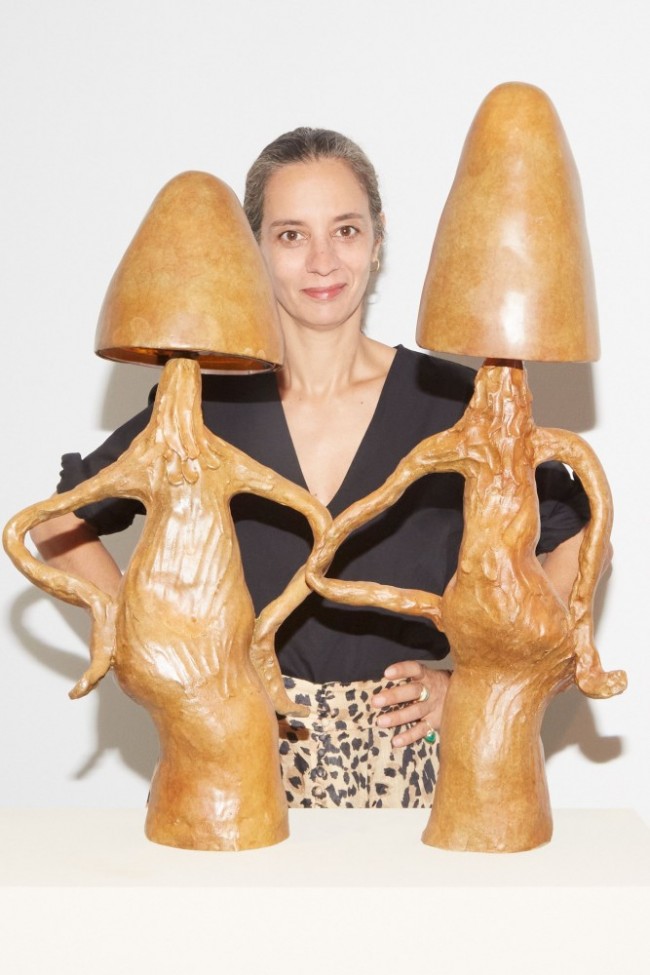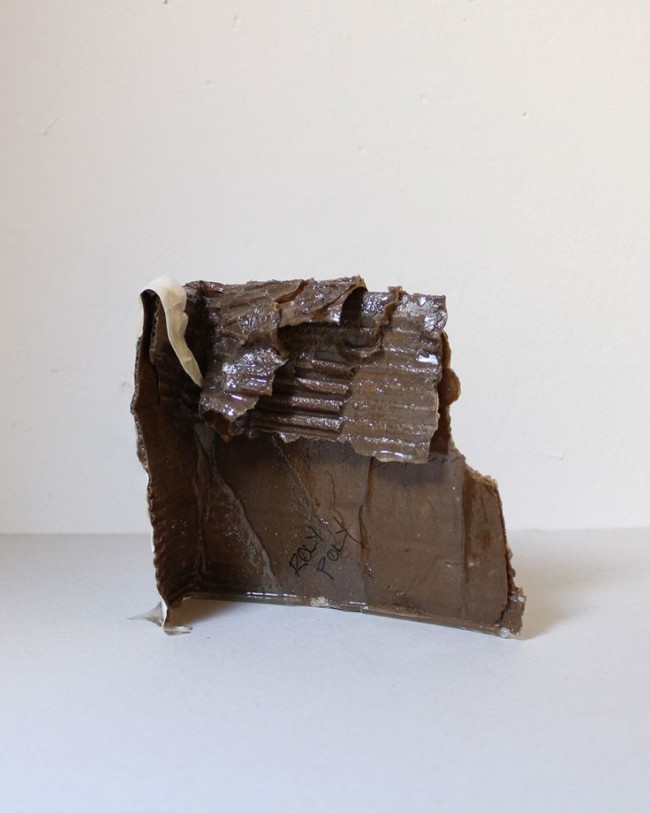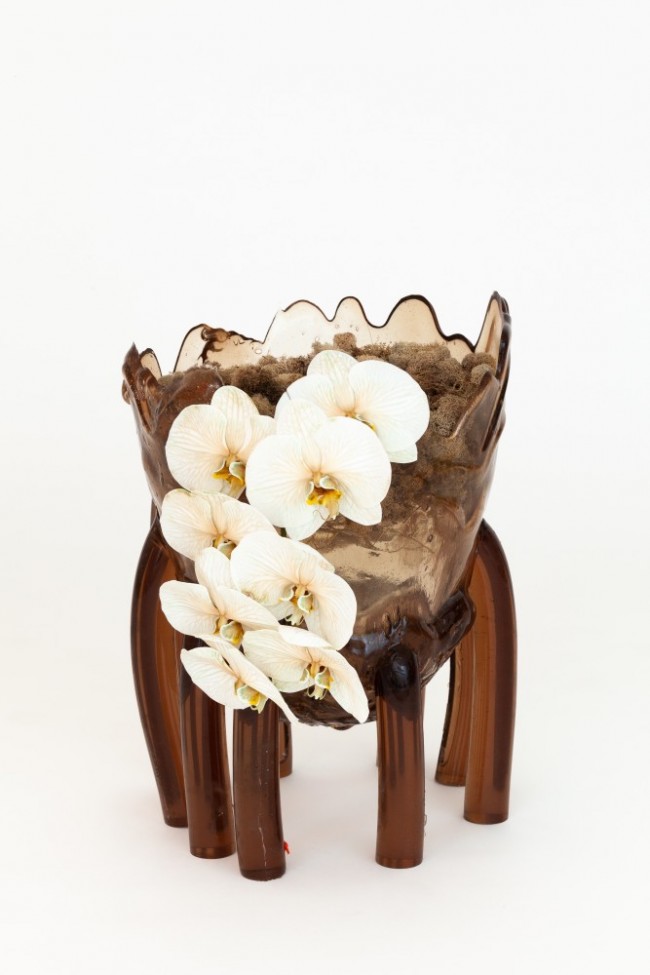What Artist Brie Ruais Knows – And Still Doesn’t Know – About Being in a Body
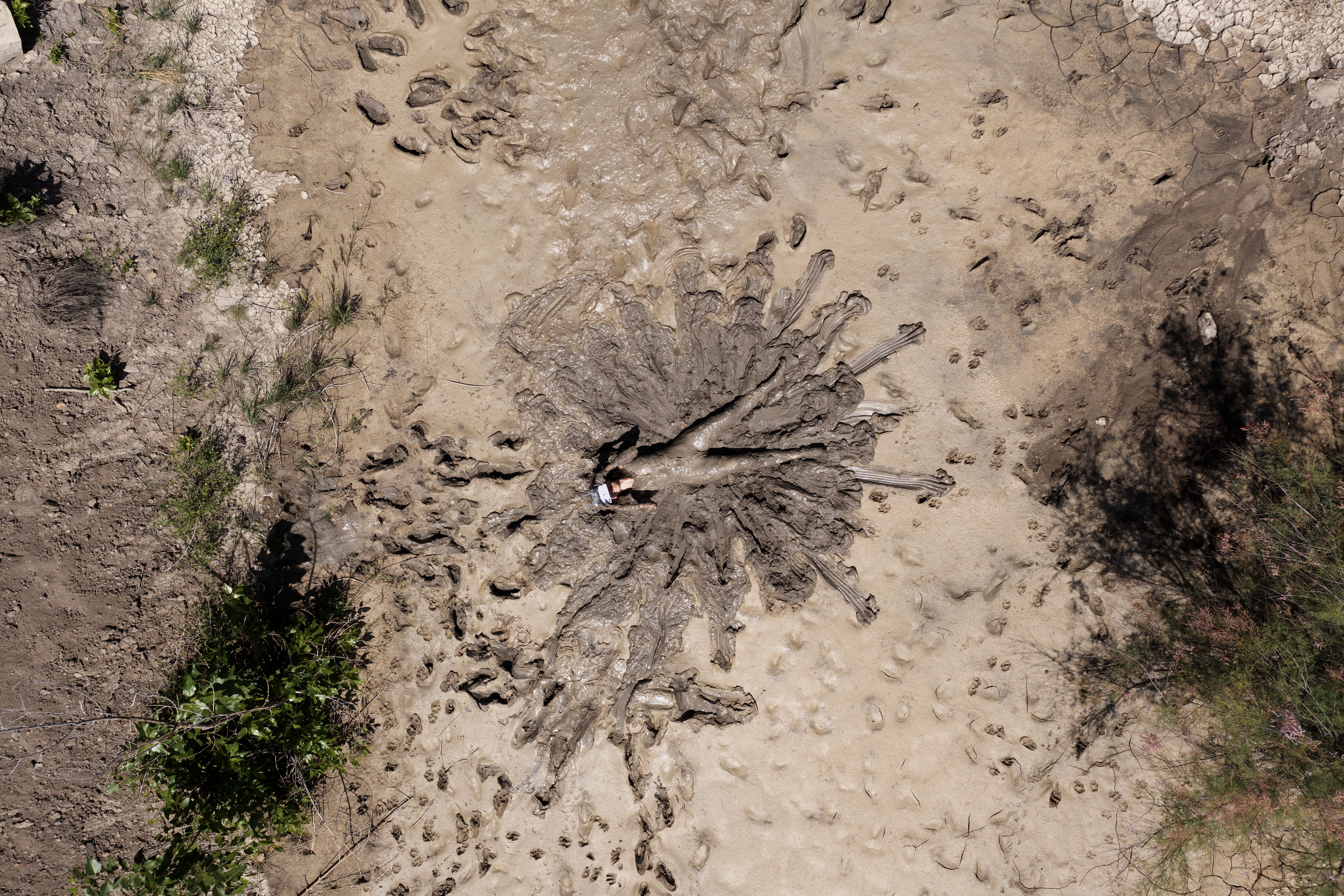
Archival pigment print. Brie Ruais, Seeing You, 2021, at albertz benda, New York.
For her recent exhibition at albertz benda, American artist Brie Ruais knocked a hole through one of its white-box walls, surrounding this void with clay that she hand-mined from a remote desert property she owns in Nevada. These large-scale expressions transform her process of physically demanding choreography from tactile movement to wall sculpture. The provenance of these radial, earthen art pieces is illustrated in a video entitled Digging In, Digging Out, a hypnotic performance piece that depicts a bird’s-eye view of Ruais, nude, as she digs into the wet ground from which her clay was sourced. Back in Brooklyn, where she is also based, we spoke about her work’s engagement of sites and shape, movement and memory, spectacle and perspective – and the meaning of the hole.
PIN–UP: At the end of Digging In, Digging Out, we see you, now covered in clay, supine and in repose. This moment of rest is the climax of an intensely laborious and kinetic scene. Because you’ve said before that your artworks “result from the struggle,” what do you consider the significance of rest here, or in your practice at large?

Installation view, Brie Ruias, Some Things I Know About Being in A Body, 2021, at albertz benda, New York.
Brie Ruais: It’s impossible to separate my work from my lived experience. I think of my work as a reflection of the way that I navigate life, or the way that a body might navigate life. Being in that clay quarry, my engagement might be through the circling choreography, the movement into or through the material of the space, which is actually just an extension of industrial gestures that have been made there. So in a very simplistic way, I could say that the rest is an opportunity for the body; I’m very present in the (making) process within the environment, and it’s a different way of being present.
The rest is also the recognition of the culmination of a piece. My work has a very specific trajectory, where I’m fully engaged, and I work until the piece is finished, until the task is complete — until the choreography is complete. I don’t stop to assess things from a formal or aesthetic perspective. The rest is the conclusion. In my studio, the way that manifests is that I step away and look at the aftermath of the engagement. It’s a moment of observation.
So in a gallery setting, we are getting to see a uniquely near-unadulterated version of what resulted at the time of you completing your process.
What’s different about “the rest” in this video, though, is that I’m very aware of the spectator. I’m looking up at the drone (camera), which is hovering above me. And the character of the audio in the video was (actually) sound from different footage that I had; the sound is completely foreign to the context, including the breathing. There’s this military aircraft base located in the northeastern corner of Nevada on the Utah border, and when I’m on my property in Nevada, I can hear them flying, so some of the sound was also these fast-paced stealth planes overhead. The drone even revealed things I couldn't have seen from the ground, like animal paths that had been carved through the landscape. It revealed to me traces of movement that I hadn’t been clued into before. I started thinking of my own work as a trace of movement, as the record of movement through place and time.
-
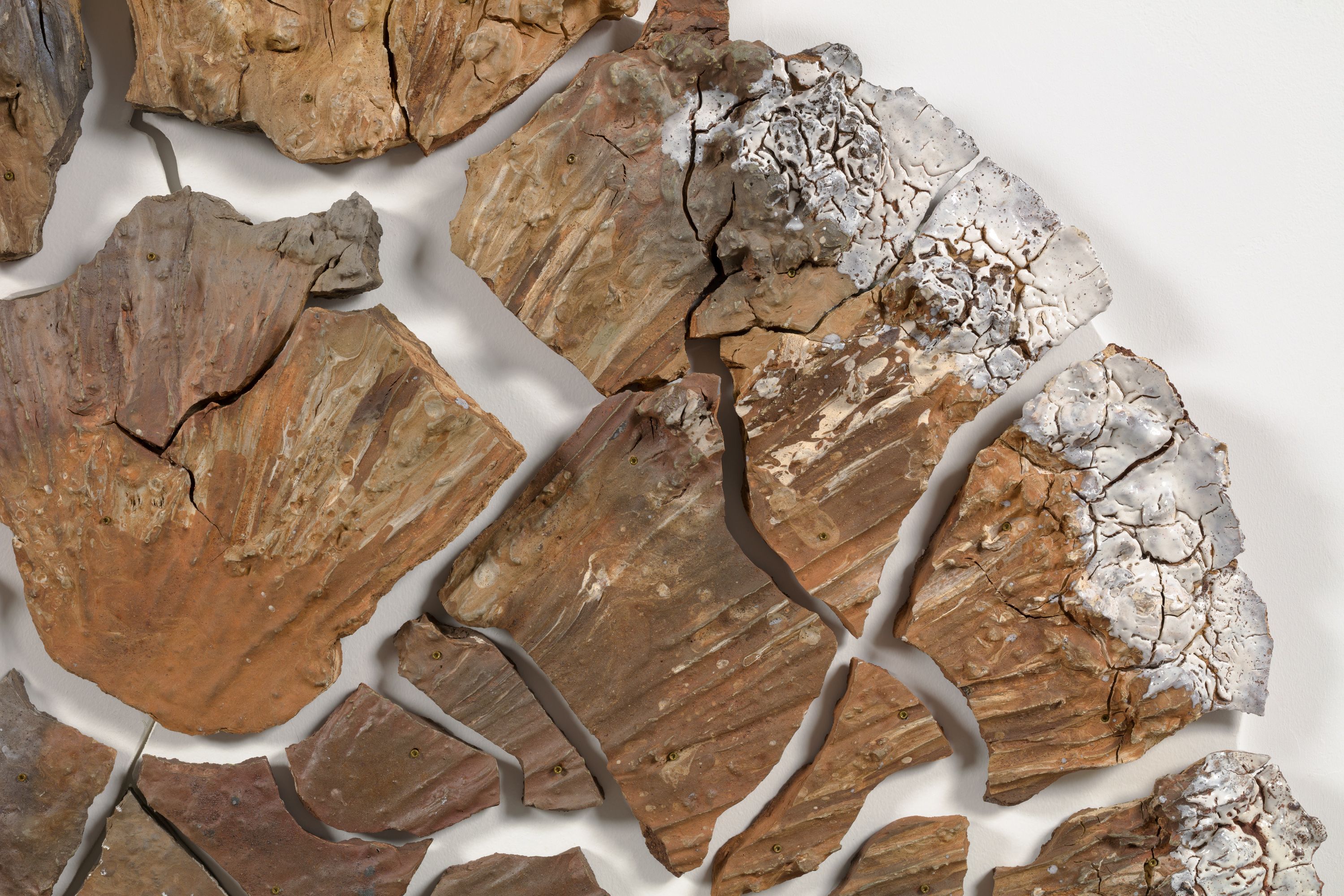
130 pounds of wild clay, glaze, and hardware. Detail of Deserting Earth Body, 130lbs, 2021, at albertz benda, New York.
-

Stoneware, glaze, found rocks, cement rubble. Detail of Falling Apart, Holding Together, Brie Ruias, 2021, at albertz benda, New York.
You’ve alluded before to the fact that clay itself transcends time, in that it holds a record of history. What is the story told by your works for this show, and how does it relate to what the clay already carries?
When I think about what story clay already has to tell, it is embedded in ceramic artifacts. We’ve learned some of the story of human civilization in the way that humans built relationships to place, such as by harvesting the clay, making containers for food and other resources to survive. So for me, the clay already has that really close relationship to humanity, and to the way that we build our lives in the world. Now, we are in a time of accelerated reevaluation of both the built environment and the natural environment. I think this has revealed our wounds, wounds that need to be addressed in new ways in order for them to heal.
In most of the work in the show, there’s this central, open void which, when I make work in my studio, is made by scraping through to the floor. I’m opening up this surface or skin or barrier to create a puncture that calls me to search anew for meaning, for answers. It’s existential; the work is opening up new spaces of passage (for understanding). That’s what the hole in the wall in the gallery is about – this puncture that exists in the architecture of a space that you have certain expectations of, or take for granted – a puncture that snaps you into the present, into your body, gives you pause. The gesture of the puncture also brings the action-based nature of all the work into the present moment.
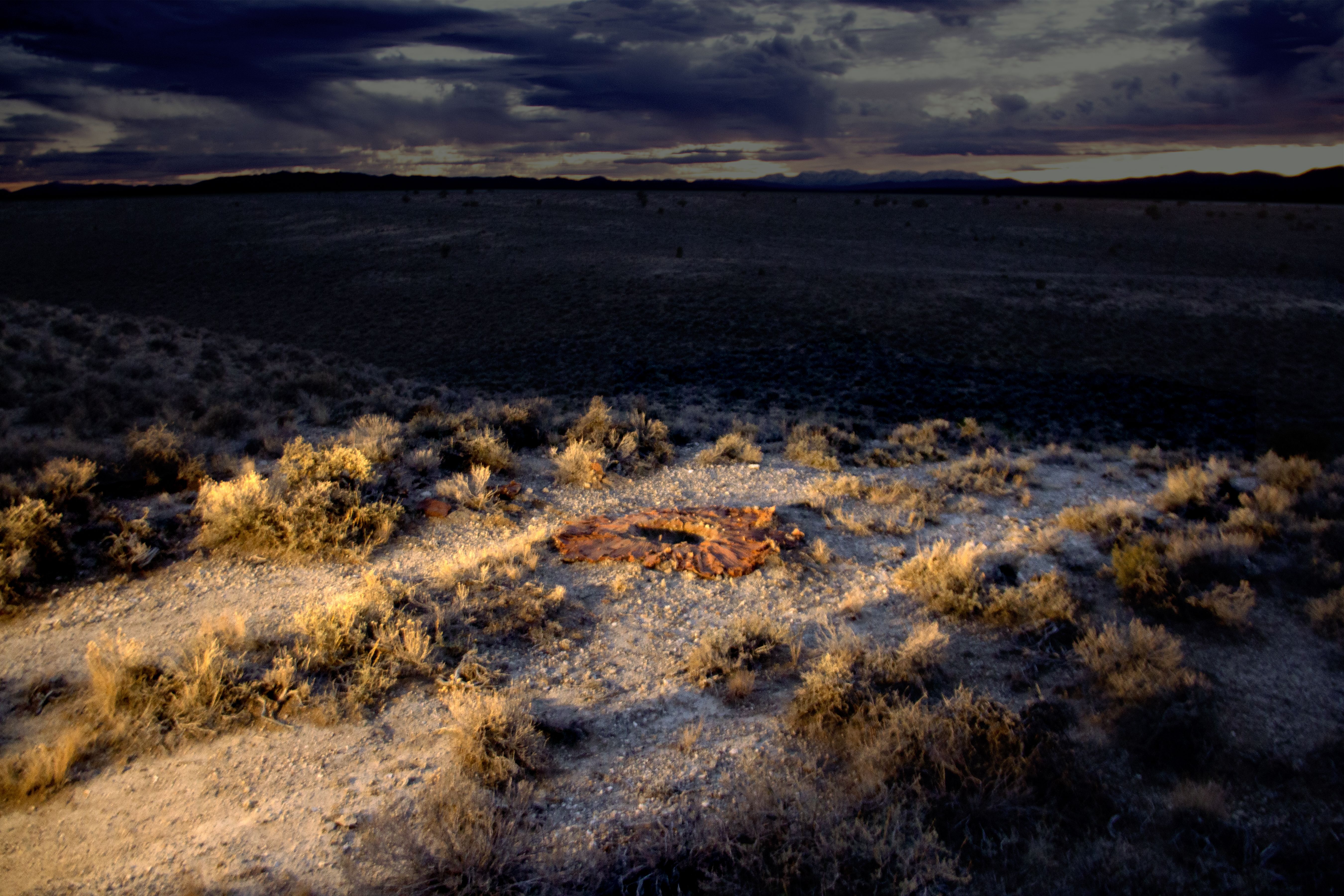
Archival pigment print. Finding You, Brie Ruias, 2021, at albertz benda, New York.
What you’re imparting to us is perhaps less of a story, necessarily, and more a provocation, or a request for interpretation or reflection.
Yes. How do we want to build our world? How do we want to build our place in it? In thinking about the primordial nature of clay, I’m also drawn to the sun as another agent in your process. The sun, with its capacity to support life, in turn relates to the female body. I think about (the sun) a lot. Something I think about a lot, too, is the circle as an incredibly meaningful shape through the history of all kinds of religions and spiritual practices. I love that you brought up the sun because it makes me connect the two; the circle may have its origin in the sun, and the meaning and the importance of that form must have originated with a worship of the sun, and the moon, and the cycles. So when we speak about women, I think a lot about that as a presence in my work: the natural cycles of a woman’s body being connected to the natural cycles of the earth, and its rotation, and time. I think a lot about that not only because my work is circular, but also because it is quite transformed by those elements, those other bodies of the sun and the moon.
And the sun does play an active role in actually forming the work. There’s one piece in the show called Deserting Earth Body. This is the piece I made outside and let dry. The heat from the sun evaporating moisture from the clay cracked it into those sections, which is exactly how the earth looked when I arrived at the quarry. Because my work is so much about the body’s relationship to the environment, I also think about sun as light, creating an environment for us. The sensitivity to an environment can simply mean the way that light falls on a place.
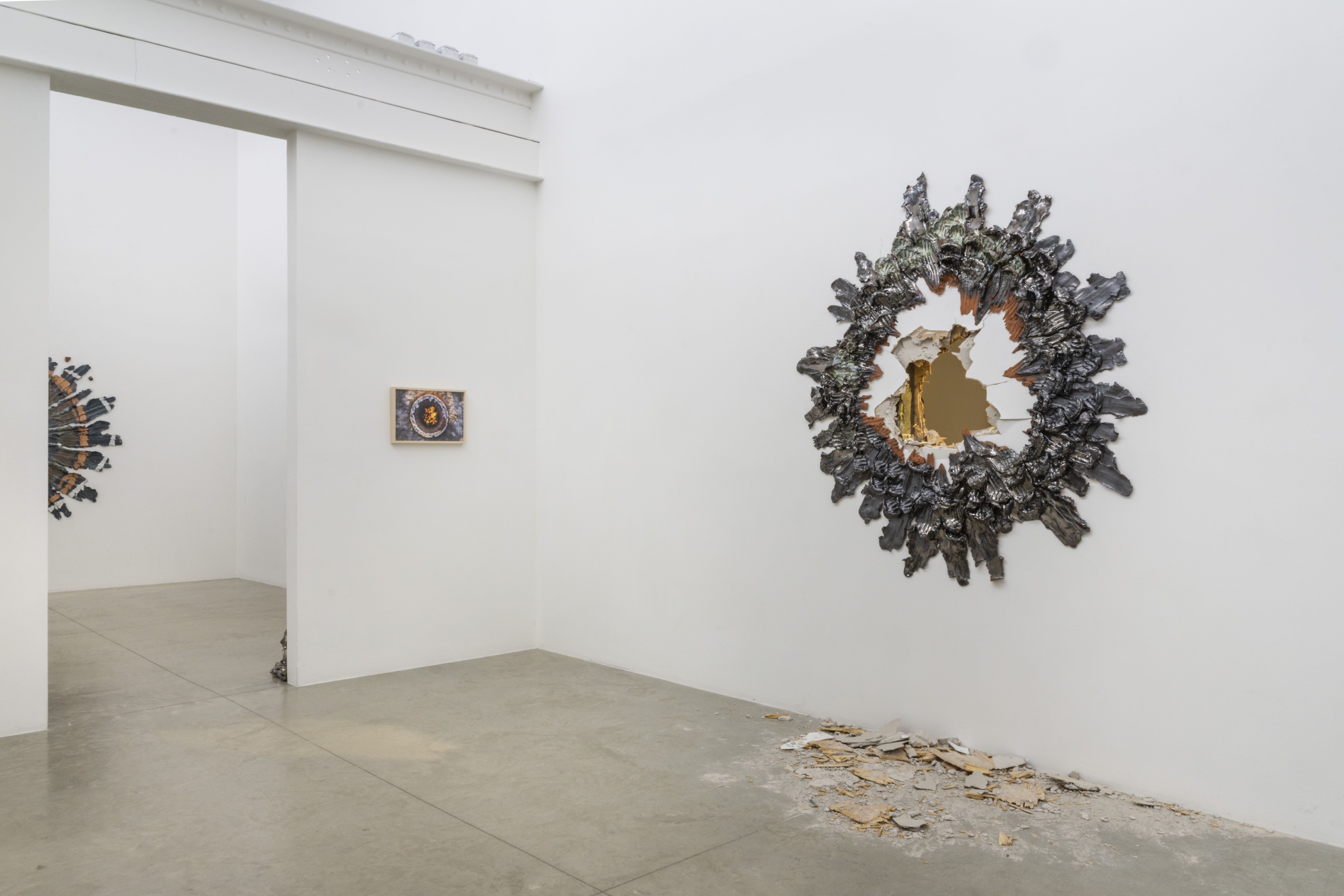
Installation view, Brie Ruias, Some Things I Know About Being in A Body, 2021, at albertz benda, New York.
There are these resounding yet tacit interpretations of your body in each artwork, per the way they were created and the symbolisms and ideas they were born from. Their presentation, then, also engages with the spectator seeing your body. It may be predictable, but this from John Berger’s Ways of Seeing comes to mind: “Men look at women. Women watch themselves being looked at… the surveyor of woman in herself is male: the surveyed is female. Thus she turns herself into an object…”
What I think a lot about in my work, and why I have gravitated to such an earthy, visceral, malleable substance to work with, is that Western civilization was built upon this idea that the mind is superior to the body. In terms of gender relations, women have been associated with the body, and men have been more associated with the mind. I’m really interested in being drawn to the earth, to clay, and I want to privilege and prioritize the body because I want them to be on equal footing. The body knows a lot of things, and it’s worth learning ways to access that knowledge.
The Berger quote calls (out) that my body is being used as a tool. And it happens to be female, so I do think about what it means to be presenting my body in this way. However, I primarily think of my body as a material. So, (in Digging In, Digging Out) I see my body as, first, just flesh. Then towards the end of the performance I’m covered in clay, so there’s a kind of relationship between the flesh of the body and the mud of the earth – they become closer. I see myself as blending in, merging with the environment. In a sense, my body has become a base material.
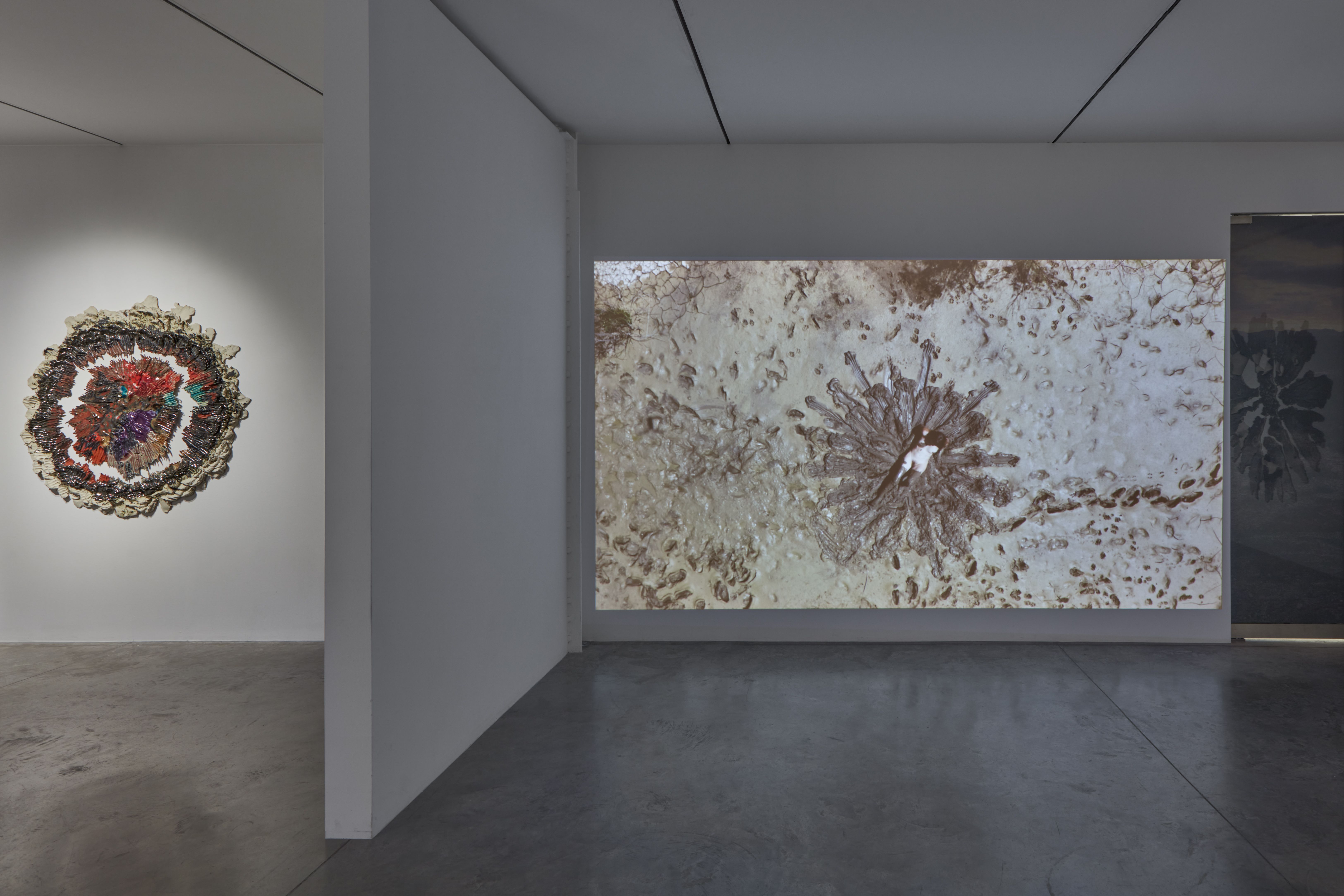
Installation view, Brie Ruias, Some Things I Know About Being in A Body, 2021, at albertz benda, New York.
Your body merging into the clay is like a subsumption, which feels almost like the inverse of birth.
I’m also thinking, now, about being covered in that clay as a kind of camouflage, from which I look at the drone looking at me. But is my body an object at that point? Is it an object to be objectified? It’s always a question when you’re dealing with the female body in photography and video.
And yet when you name your body “tool,” and the tool is for your use, the agency of the body stays with you, the artist.
I think so too. It also, again, flips it into being a material, which means that I’m cultivating a lot of meaning from the use of the body. I’m acknowledging all of these ways in which the body can be seen, or interpreted.
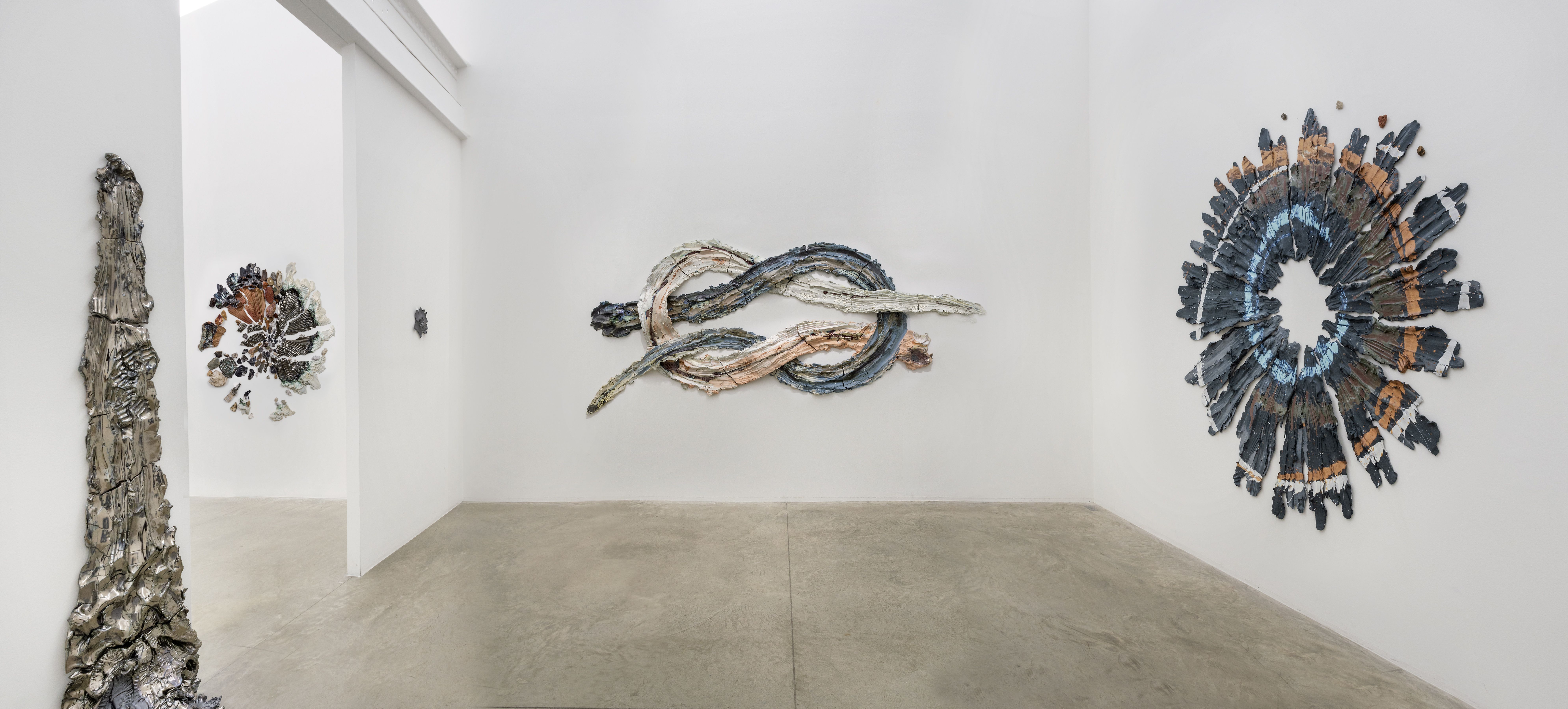
Installation view, Brie Ruias, Some Things I Know About Being in A Body, 2021, at albertz benda, New York.
The name of your show, Some Things I Know About Being in a Body, is itself a clear nod to your corporeal agency. What has become known to you through this process of creating? What has been revealed?
The reason I feel really grateful to my work is that it has offered me an experience of the world in ways that I wouldn’t have ever planned or conceived of. Working with clay brought me to explore places that I hadn’t ever been before. Even if it’s a solo road trip through the desert, or spending time in a very remote area of Nevada in order to make ephemeral work – or even buying a drone! I had never thought of myself as someone who would own such a thing.
What my work has revealed to me is an opportunity to see humanity and our relationship to our world from different perspectives. These shifts in perspective, shifts in life’s course, don’t always reveal answers; they just reveal more questions.
Text by Emily R. Pellerin
Images courtesy of the artist and albertz benda

